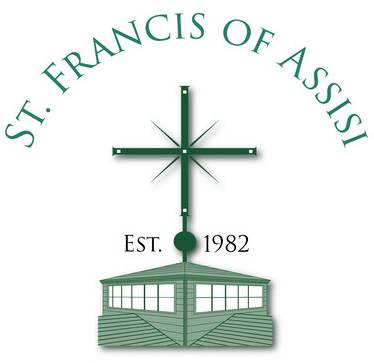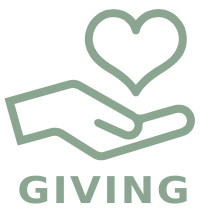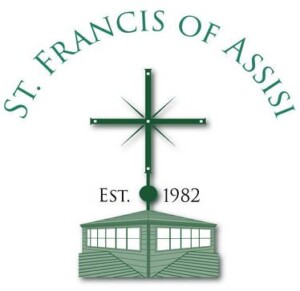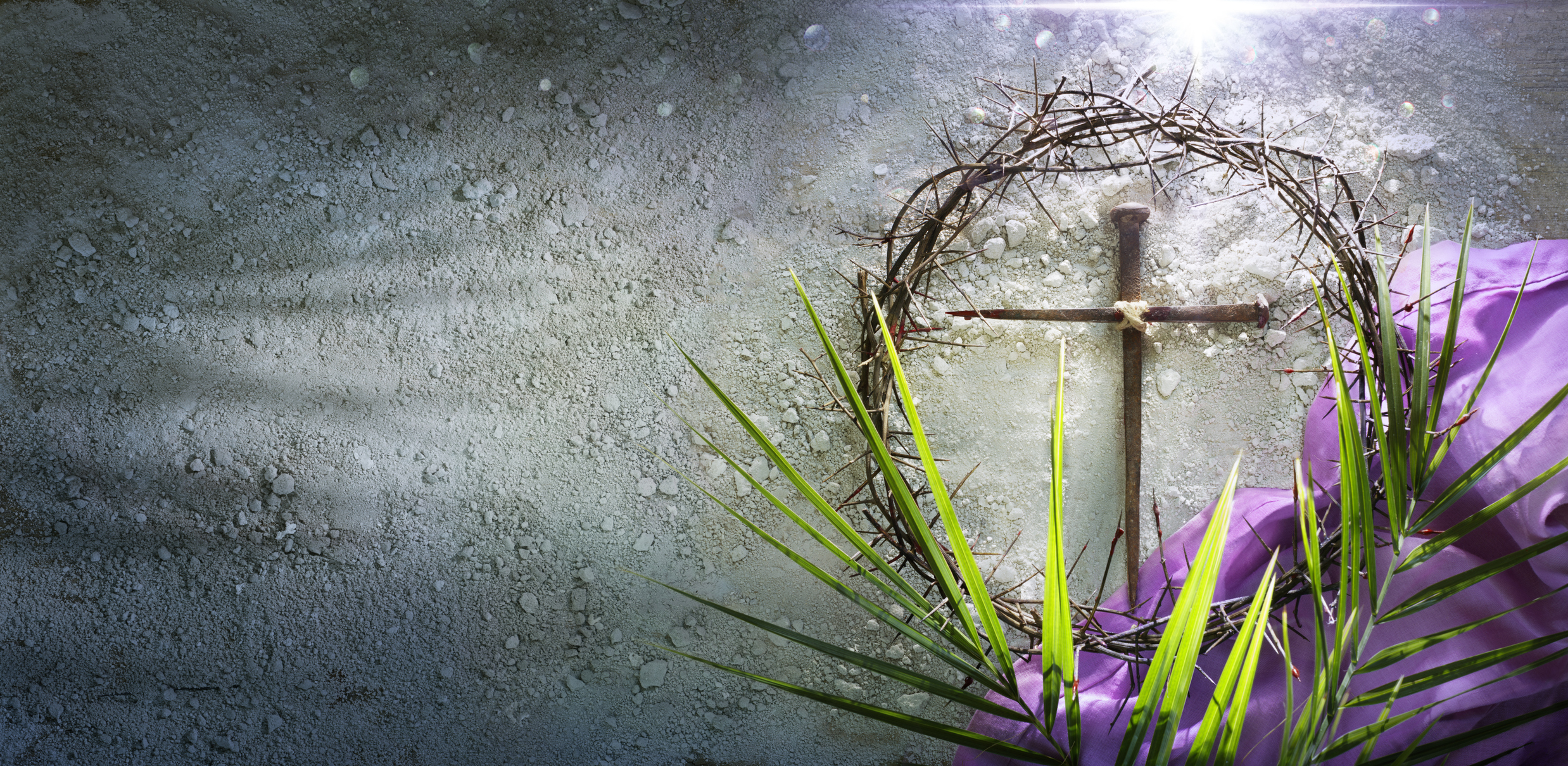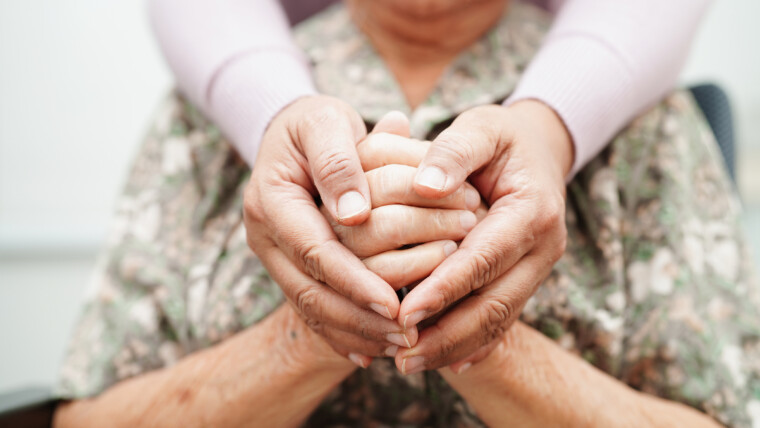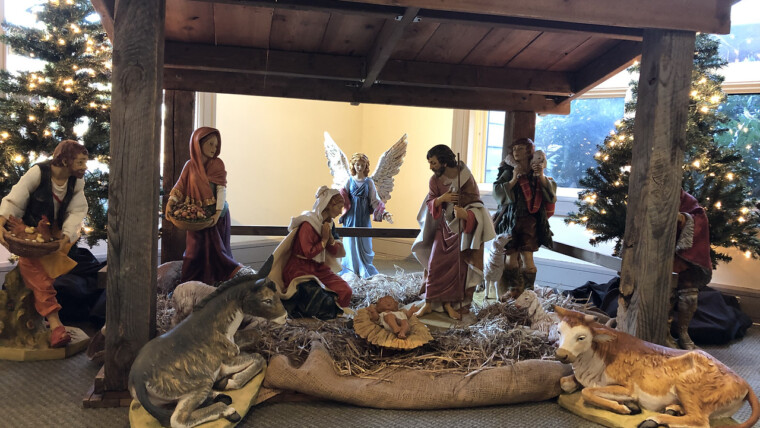Holy Week and the lead-up to the celebration of Easter are all about family and community. As Pastor Chris Koehn emphasizes, “A lot of the gifts of Holy Week, that maybe all of us as a parish family don’t take advantage of, model the idea that ‘Church is always family.’ If your family has traditions for that week, that’s where our starting point is.” When Father Chris grew up, Holy Week was time off from school, and many offices were closed, so it was a time for family for him. He remembers that people vacationed that week, and he recalls ‘celebrating’ and spending time with his family. “For Holy Week,” Father Chris says, “families should consider ‘What makes our life blessed?’ You should be with those you love and change your pace to cherish them. It should be a week of ‘Valentine’s Day.’” “Holy Week should be similar to the tradition of ‘beach week’ that many have,” adds Chris. “During that time, you do things with your family, have dinners together, and don’t work or go to school like ‘normal.’”
Father Chris also mentions that traditions can be cultural, as well. “If you are Hispanic, Good Friday is an important expression of faith, often more so on Good Friday than Easter Sunday. Spain spread the faith throughout the New World, and their tradition is to do the living expression of the Passion.” “Every city and town will shut down,” says Chris, “and they will re-enact in the town square, then pray all night and say the rosary.” Another growing cultural tradition in the area is the blessing of food baskets on Holy Saturday. Father Chris notes, “There have been enough Europeans (Polish, Scandinavian, Lithuanians, and others) moving into the area that their tradition on Holy Saturday of blessing baskets of the food that is to be cooked for Easter Sunday by the priest is growing.” While these traditions are ‘new’ to many of us, they continue to focus the Church and us on the sense of community and family during Holy Week.
Jenn Fiduccia, long-time Coordinator and Director of Faith Formation at St. Francis, who many know for the beautiful gift of her voice at liturgies, agrees and says, “I think the underpinning and foundation of Holy Week is preparing for Easter. The focus is on the people entering the Church; we remember it is all about the people of God entering new life through their baptism.” She adds, “If you are a parent with younger children, it may be a fun idea to pull pictures of their baptism day and talk with them about that experience during Holy Week. Watch the videos and discuss what it means to be baptized and have new life in Christ. Some parents light their kids’ baptism candles and look through all the memorabilia from that day.” It is a great connection to link your family’s baptisms with the new life we celebrate at Easter and the journey of the Catechumens.
What are some ways that we can focus on the meaning of this week? Holy Week technically starts on Sunday, with Palm Sunday. “If you kept the palms and made the cross from them or stuck them behind the sacred heart of Jesus or the crucifix on the wall, that’s your tradition,” says Father Chris, “but Holy Week should be a time to slow down or stop what you would normally do and spend time together.” Jenn believes that Good Friday afternoon into Holy Saturday is the perfect quiet time for the family. “Holy Saturday is ‘liminal space,’ or a kind of ‘in between,’ and there’s a beautiful ancient homily we read at morning prayer on Holy Saturday that talks about what is happening,” she says. It’s the pregnant pause, we’re waiting for new life to burst forth, like when the seed is planted and growing, but we can’t see it until it bursts through the soil; it’s a time to pause as Church. “Many families will stop using electronics on Good Friday afternoon or not participate in social activities. I would encourage them to continue that through Holy Saturday to the Vigil. Take a walk with your family, and look at the plants bursting forth from the ground or the leaves filling the trees. Think about new life coming from being buried, ‘How did God help you come to a new life?’”
Jenn adds perspective on involving kids even more in the whole week. “When you go to Church during Holy Week on the different days,” she says, “ask your children to notice the changes within the sanctuary. During Lent, the church looks a certain way; on Palm Sunday, it’s red with palms; on Holy Thursday, it’s white with eucharistic symbols, sort of like a mini-Easter as we celebrate the Eucharistic banquet. Friday, it’s red again, the altar is bare, and the tabernacle is empty. At Easter Vigil and on Easter Sunday, it’s bursting with flowers. Using the liturgical decorations and seasonal cues to focus our minds on what’s going on is a good way to discuss Holy Week and its message with kids.” “There is a tradition ‘up north,’” says Jenn, from New Jersey, “that on Holy Thursday, after Mass, people would visit different Churches that night during the reposition of the Eucharist. It comes from a tradition from the 1500s of making a pilgrimage to the seven basilicas of Rome to keep watch with Christ and reflect on the seven final places Jesus went from his arrest on Holy Thursday to his death on Good Friday. Perhaps it would be a good time to visit one or two other parishes to make that pilgrimage with Jesus.” All these activities can help focus them and get them to ask questions about the beautiful symbolism of each day and activity, a symbolism many adults may not even realize.
Jenn also emphasizes the latter aspects of the week. “Starting Wednesday night, with our Tenebrae evening prayer until the celebration of Easter Vigil, is really one big liturgy of the Church, and Father Jim (Sabak) had an excellent teaching on this, saying participating in as much as possible will help you get the whole story. We should also pray for the Catechumens because Lent is about getting ready for baptism for them; we like to think it’s about sin, but it’s truly about being mindful of your new life in Christ.” She emphasizes that we should ask, “Am I living in the hope of resurrection and seeing the whole picture?” “It’s very easy to focus on sin and Good Friday because it’s tangible and relatable,” says Jenn. She adds, “I’ve heard Father Jim preach about not wanting us to stay in that moment. He says we should acknowledge God’s goodness and his ultimate conquering of death. Jim points out that God created us to be good and not live in sin. Certainly, we need to recognize and make up for those sins, to repent and live in a way that magnifies Christ, but we must realize that nothing can separate us from God’s love.”
As we approach Palm Sunday on April 13th, consider making this Holy Week more than it may have been in the past. Listen to homilies and perspectives from our priests as we enter Holy Week, watch Father Jim’s Daily Reflection, consider Father Bill McConville’s daily devotional in his ‘Word on the Inspired Word” (sign up here), spend time with your family as a family, and find other inspiration and ways to make this Holy Week the Holiest of Weeks for your whole family.
